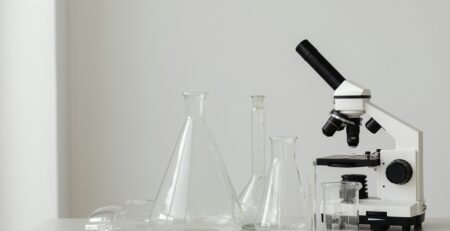29
Aug
How to Choose the Best Borosilicate Beaker Set for High-Heat Lab Use
When working with heating applications, selecting the right beaker set can directly affect accuracy, safety, and longevity of your experiments. Borosilicate beakers remain the gold standard, trusted worldwide for their resistance to thermal shock and chemical attack.
Why Borosilicate Beakers Are Ideal for Heat
BORO 3.3 borosilicate glass, as defined under ISO 3585 and ASTM E438 standards, offers low thermal expansion, meaning it can withstand rapid heating and cooling without cracking. For Australian labs working with hot plates, Bunsen burners, or autoclaves, this makes borosilicate beakers safer and more reliable than soda-lime alternatives.
Key Features to Look For
- Graduation accuracy: Class-etched markings ensure reproducible results.
- Uniform wall thickness: Prevents stress fractures during high-heat cycles.
- Spout design: Precision pouring reduces sample waste.
- Range of volumes: From 50 mL teaching sets to 5 L research beakers.
Applications in Australian Labs
From primary school STEM classes to university chemistry labs and industrial QC labs, borosilicate beaker sets are a versatile choice. They’re widely used in titration setups, sample preparation, solution mixing, and heating applications where durability and accuracy are critical.
Why Choose LabChoice Australia
LabChoice beakers are crafted from BORO 3.3 glass and comply with ISO and ASTM standards, ensuring global compatibility and trust. By sourcing directly through LabChoice Australia (labchoiceaustralia.com.au), you also support an Australian-owned supplier dedicated to reliable service and national delivery.
FAQs
Are borosilicate beakers dishwasher and autoclave safe?
Yes, BORO 3.3 glass resists both thermal and chemical stress, making them safe for autoclaves and standard lab washers.
Can borosilicate beakers be flame-heated directly?
Yes, provided the heating is gradual. ISO 3585 borosilicate glass is designed for controlled flame use in laboratory settings.
What’s the difference between borosilicate and soda-lime beakers?
Soda-lime beakers are cheaper but prone to cracking under heat. Borosilicate provides durability and safety in high-temperature work.
References
- ISO 3585: Borosilicate Glass 3.3 – Properties & Applications
- ASTM E438 – Standard Specification for Laboratory Glassware
- University of Melbourne – Laboratory Glassware Handling Guide

